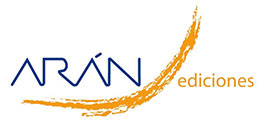Trabajo Original
Factors associated with dietary supplementation among brazilian athletes
Hellen Clair Garcez Nabuco, Vanessa Behrends Rodrigues, Vânia Letícia Souza Fernandes, Fabrício César De Paula Ravagnani, Carlos Alexandre Fett, Mariano Martínez Espinosa, Christianne De Faria Coelho Ravagnani
 Número de descargas:
28125
Número de descargas:
28125
 Número de visitas:
9210
Número de visitas:
9210
 Citas:
0
Citas:
0
Compártelo:
Background: Many factors can influence an athlete to consume dietary supplements, such as age, sex and sports, among others. Few studies regarding the prevalence and associated factors are available for athletes, especially in developing countries. Objective: The aim of the study was to determine the factors associated with the consumption of dietary supplements among Brazilian athletes. Material and methods: This is a cross-sectional study involving 182 athletes of both sexes. The athletes answered a questionnaire containing sociodemographic and sports information, current consumption of supplements, consumption of pharmacological substances and information on body image disorder (Body Shape Questionnaire) and muscle dysmorphia (Muscle Appearance Satisfaction Scale). Analyses were performed using Pearson’s Chi-squared test, the crude prevalence ratio (PR) and Poisson regression with robust variance.Results: In the bivariate analysis, the male gender, age between 25-29 years, engaging in a remunerated activity, consumption of pharmacological substances, body image disorder, risk of muscle dysmorphia, power modality athletes and lack of medical care were factors associated with supplement intake. After the regression analysis, the consumption of supplements was associated with the male gender (PR: 1.68; 95% CI: 1.01; 2.78; p = 0.044), use of pharmacological substances (PR: 1.77; 95 %: 1.37; 2.27; p < 0.001) and the risk of muscle dysmorphia (PR: 1.75; 95% CI: 1.37; 2.23; p < 0.001). Conclusions:The results of this research clearly demonstrate the importance of professionals working closely with athletes to continuously monitor their use of supplements, since it was an alimentary behavior associated with other risk behavior (pharmacological use) as well as image disorders (muscle dysmorphia).
Palabras Clave:
Artículos más populares
Revisión: Inteligencia artificial generativa ChatGPT en nutrición clínica: avances y desafíos
ChatGPT y otras herramientas de inteligencia artif...
Revisión: Suplementación con micronutrientes y sus beneficios: ¿por qué y cuándo?
Introducción: los micronutrientes participan en la...
-
Licencia creative commons: Open Access bajo la licencia Creative Commons 4.0 CC BY-NC-SA
https://creativecommons.org/licenses/by-nc-sa/4.0/legalcode




